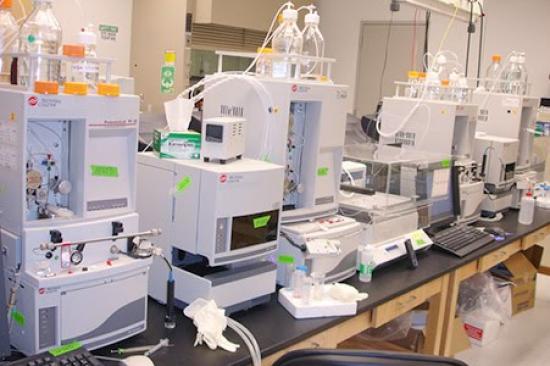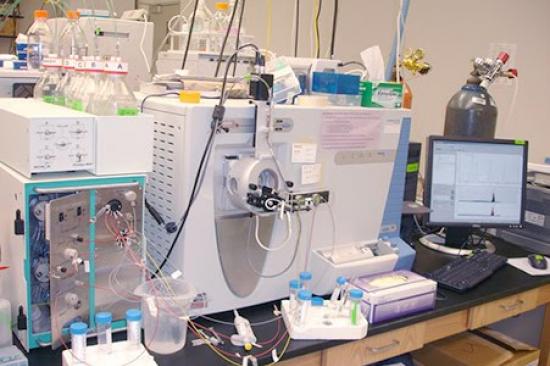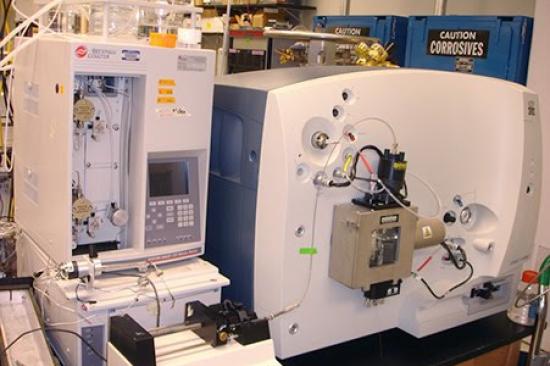Glycoproteins provide fertile ground for biomarker discovery given their ubiquity in serum, blood and other biofluids. The complex carbohydrate groups that bind to the primary protein may be branched or charged, and these carbohydrates change in their composition and location in the setting of cancer and in other diseases. Analyzing these disease-specific changes can speed diagnosis, ascertain disease stage and progression and help monitor treatment. Our laboratory uses a wide range of methods and technologies – including mass spectrometry, many types of separations methods and antibody and protein microarrays – to analyze and profile large numbers of proteins, including glycoproteins.
Dr. Lubman and his team have developed a total liquid 2-dimensional separations method based upon isoelectric focusing in the first phase followed by nonporous RP HPLC to generate an image of the protein content of a cell lysate. The proteins in the liquid phase can then be analyzed by electrospray-TOF mass spectrometry to produce a molecular weight map of the proteins in the cell up to 100 kDa.
In addition, tryptic mapping and MALDI-TOF MS can be used to identify proteins against various computer DNA databases. The result is that comparisons can be made between different cancer cell lines to identify proteins that might be important biomarkers of cancer.
Further details on the structure of proteins identified as important to cancer are being determined using sequencing by capillary liquid chromatography/TOF-mass spectrometry, where changes in sequence and posttranslational modifications can be determined. Tissue microarrays are being used to learn about the response of antibodies to these proteins in different tissue samples.
Ultimately, proteins identified as being important to a specific type of cancer are being developed into a protein chip format as a means for early diagnosis of cancer. Biostatistics are being used to determine which proteins are important in cancer transformation and how different cancers can be classified according to the protein expression of the cell.
We investigate how these sugar-coated proteins are differentially expressed by cancer and normal cells. Understanding the ways in which proteins are modified or overexpressed in the context of cancer will provide a greater understanding of the pathways involved in tumorigenesis and metastasis. Extending our work has led us to develop new methods and instruments for two additional frontier areas in the field of proteomics: the detection and analysis of exosomes and of single amino acid variants.





